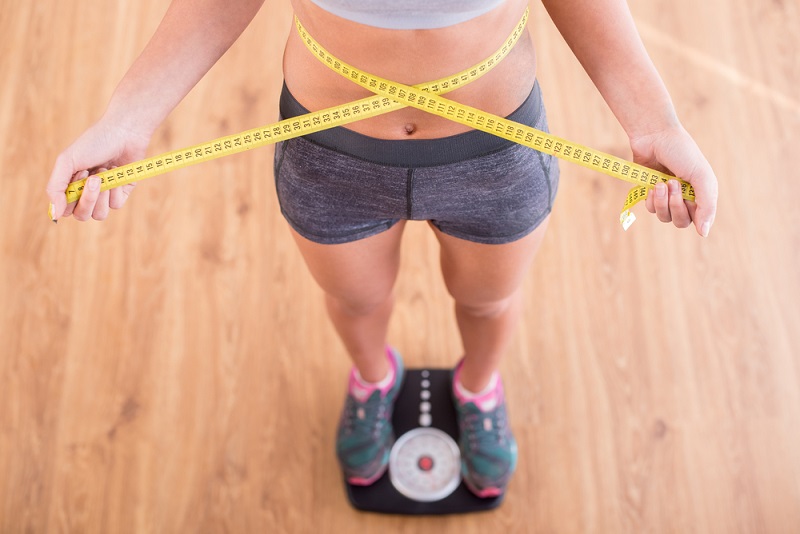Check most people’s bathrooms and you’re likely to find a weigh scale in it. At some point in your life, I bet you’ve weighed yourself (and maybe are doing it now). I do. But when was the last time you measured your waist circumference? Because how big your waist is, can tell you a lot more than your weight.
Weight is a poor indicator of health and wellbeing, yet it remains a popular measurement. Your doctor has probably weighed you at some point in time, if not every time he/she sees you. Has your doctor ever measured your waist?
While most of us weigh ourselves to get an idea of how much fat we have, our weight is a mix of fat, bone and muscle. The weigh scale also can’t tell you where the fat is on your body. And where you carry your fat is just as important to your health as how much you have.

Fat is an Active Organ
Years ago we used to think fat as just a storage depot. Whenever your body took in extra calories, they would be converted to extra fat and stored until you needed it later. This is similar to those extra plates you have in your kitchen cupboard. You don’t need them all the time, but when company comes, you bring them out.
We now know that fat is an active organ that releases and responds to hormones in your body, and is involved in energy balance. We also know that fat in different parts of your body affects your health differently. For example, fat around the waist is worse for you than fat around the hips, legs or arms.
There are two main types of fat in our bodies; subcutaneous and visceral fat. Subcutaneous fat rests right under the skin. It’s the fat you can pinch around your stomach and it’s all over your body. If you have fat on your arms and legs that’s subcutaneous fat.
Visceral fat is found around your waist, or abdominal area. It sits deep below the subcutaneous fat, behind the muscle wall and around your internal organs. No other area of your body contains visceral fat.

Fat Around Your Waist Packs a Nasty Punch
Most of our body fat is stored as subcutaneous fat, while less than 10% to 20% of it is visceral fat. But it sure carries a metabolic punch. The fat in visceral fat acts differently from subcutaneous fat. The fat cells differ in size and it are more active in releasing hormones and fat into the body.
Because of this, a greater amount of visceral fat is associated with higher levels of bad cholesterol, blood sugar and fats in the blood. People with more visceral fat also have a greater chance of getting diabetes, heart disease and stroke. In contrast, subcutaneous fat doesn’t appear to be associated with any of these risk factors or disease (Note: that doesn’t mean high levels of subcutaneous fat are fine. High levels of subcutaneous fat can add extra weight and stress on joints and your back.).
In a research setting, we measure visceral fat either using a CT or MRI scanner. Since it lies behind your abdominal muscles, we can’t measure it without these high-tech imaging scanners. However, a simple sewing tape measure is a great second best way to measure visceral fat.
A high waist circumference is an indicator of more visceral fat. And, a higher waist circumference is also associated with higher risk factors and disease risk.
The amount of fat around your waist is so important, it doesn’t matter much about any other fat you have. People who may be considered at an ideal weight but have a bit of a stomach are at greater risk for heart disease and early death compared to people who may be bigger overall but with a slim waist.

Measuring Your Waist Circumference
There are two common ways to measure your waist. One is by taking it at the top of the iliac crest (your hip bones). The other is taking it at the midpoint between the top of the iliac crest and bottom of the lowest rib. In both cases you want to make sure the tape is parallel to the ground. For this reason it may be easier if you get someone to measure it for you.
You may be thinking that your belt size could be a good indicator of your waist and for some people that may be true. But in people with a large waist, their belt often lies below their belly and isn’t an accurate measure. Current guidelines suggest an ideal waist circumference is <94 cm for men and <80 cm for women.
The waist circumference is also a better measure to use when on a weight (fat) loss diet. When people lose weight, their waist gets smaller. However, a small, but noticeable, change in your waist is unlikely to be noticed by the weight scale. Losing an inch around the waist (which is fantastic by the way) may only be about 1-2 pounds of fat, and for someone who’s 150 to 200 pounds that’s likely in the error of the scale.
So if you’re interested in a body measure that can reflect your health, get out your sewing tape. And next time your doctor asks to measure your weight, ask him/her to also measure your waist circumference.
If you like this post, don’t forget to subscribe to my blog at the bottom of the page.
Enjoy listening to podcasts? Check out my show How to Health. A podcast about you and your health.


Leave a Reply